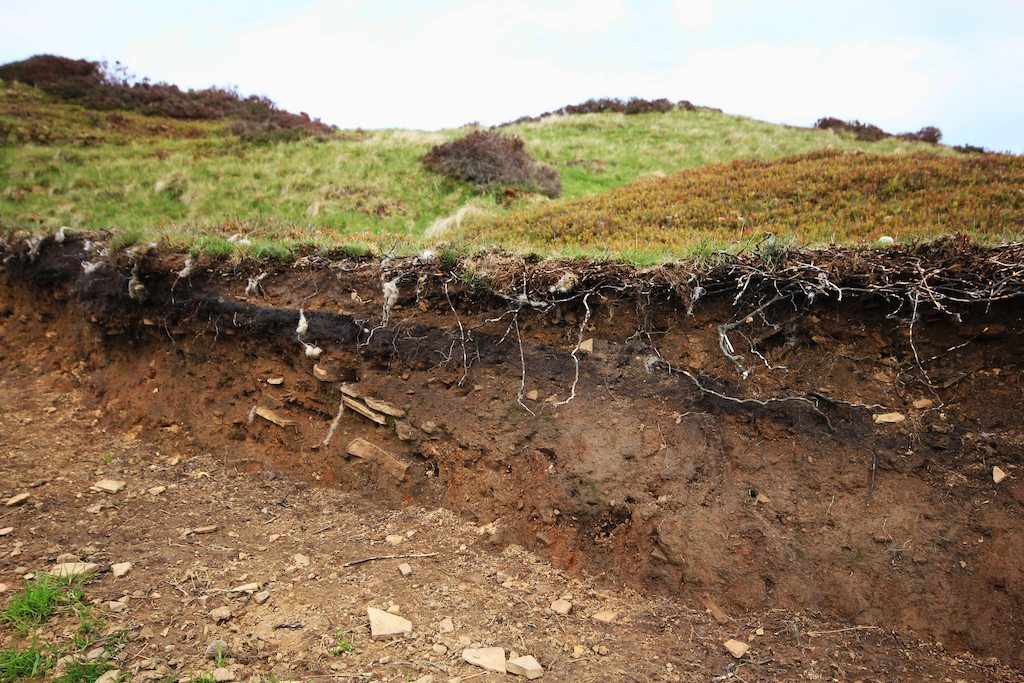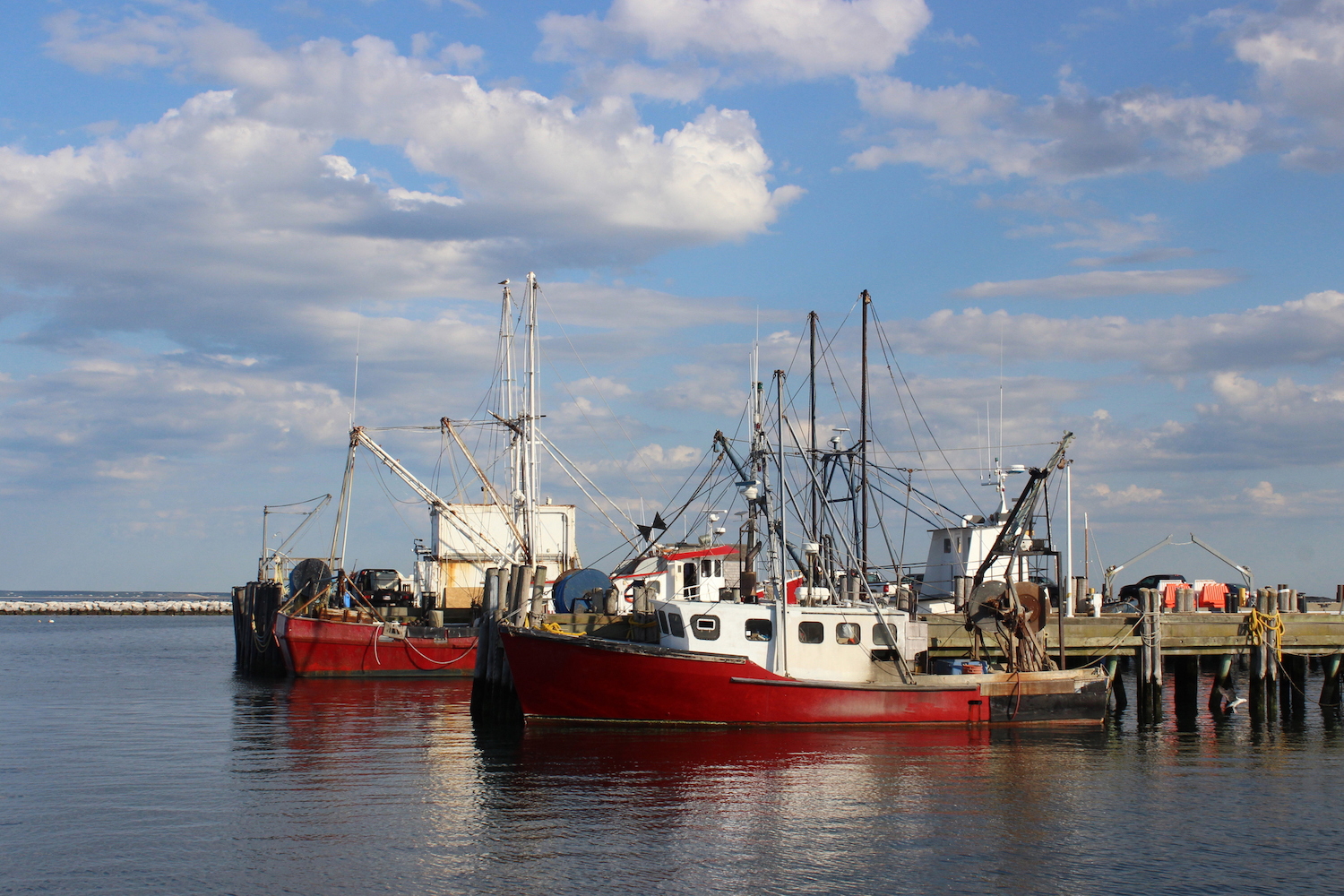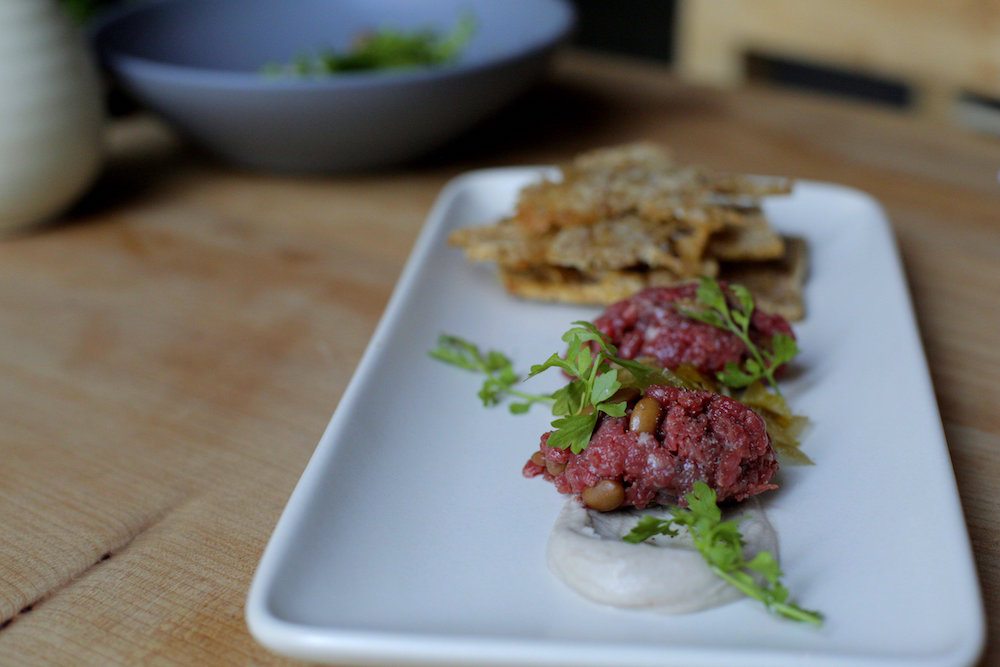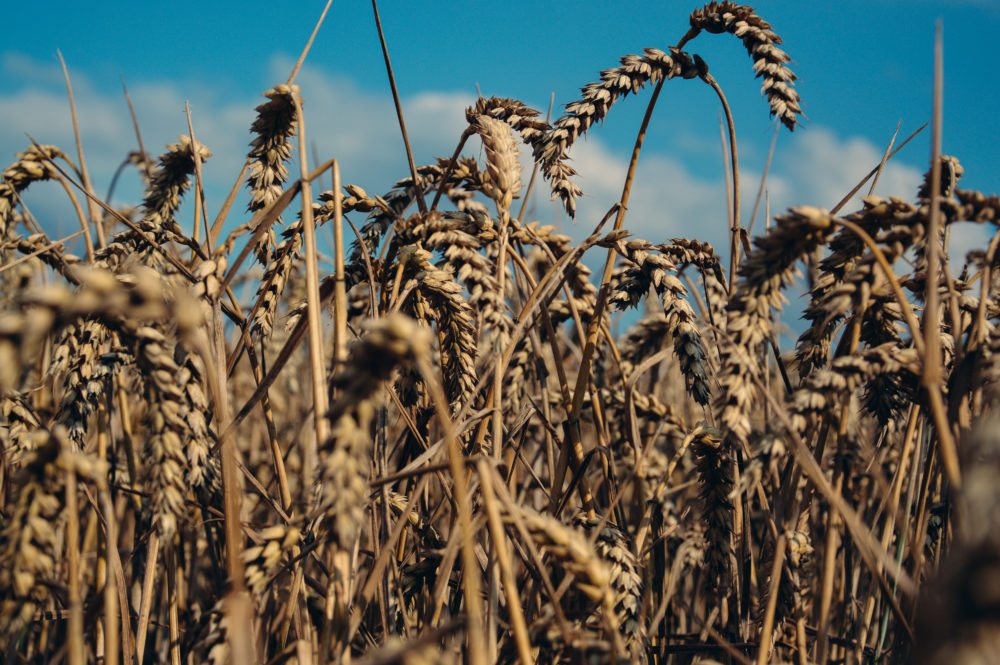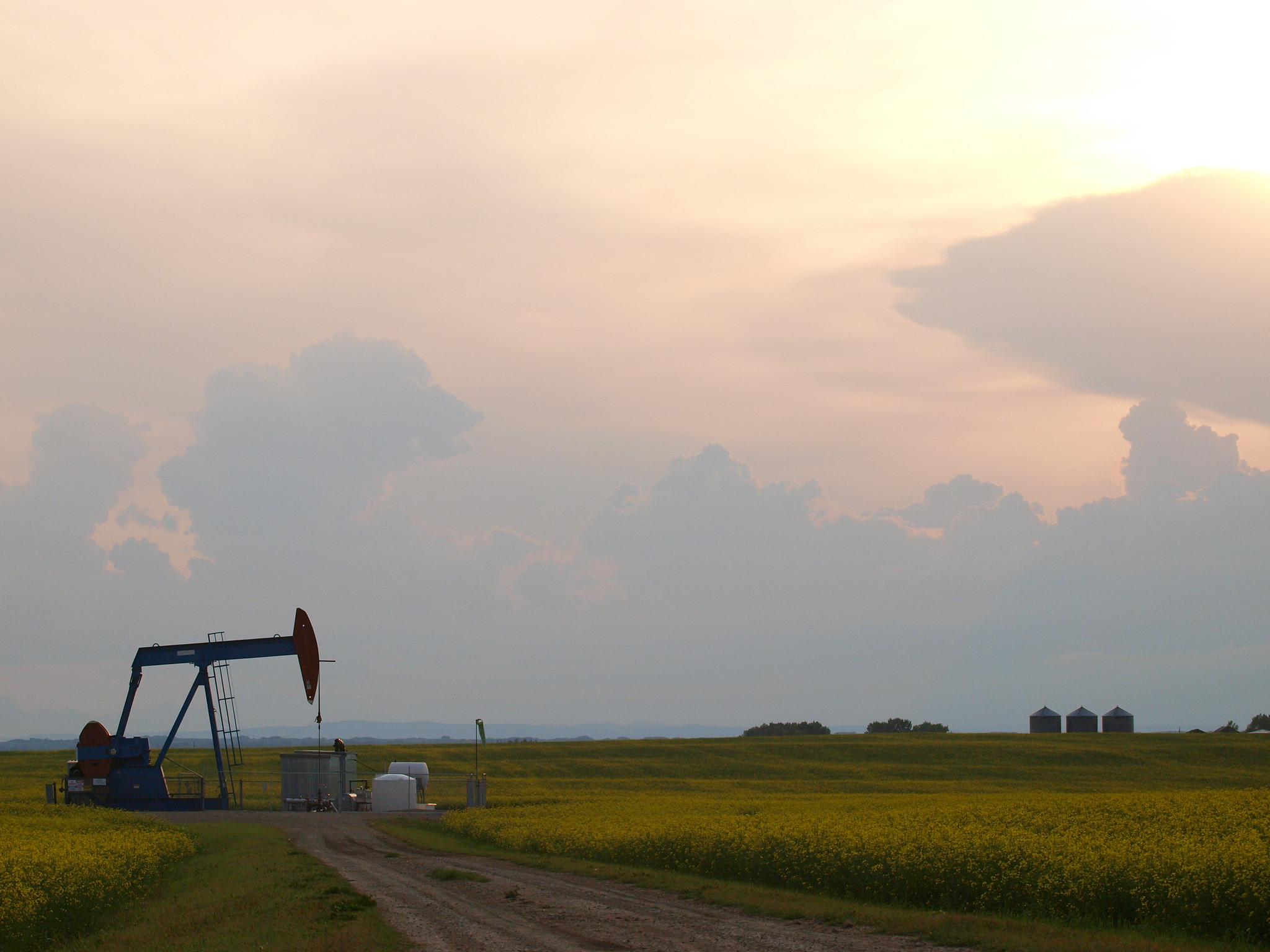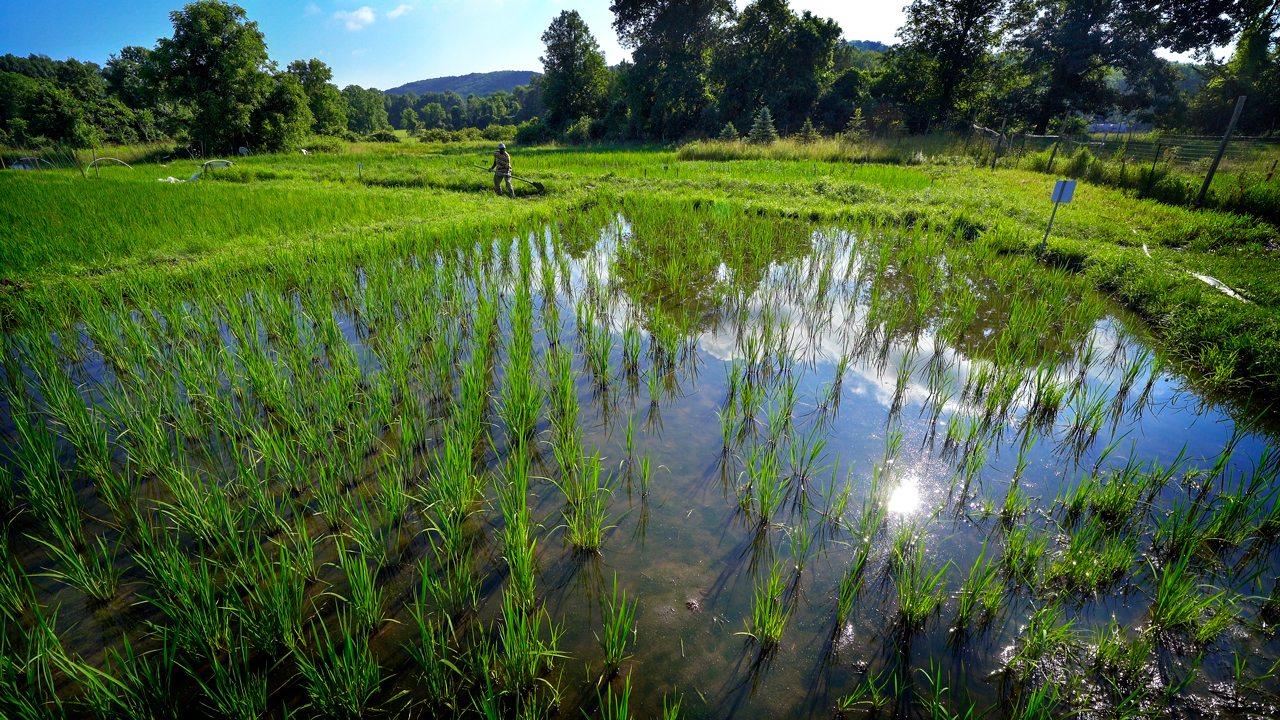
John Munson/Cornell University
The challenge for rice farmers is how to meet demand for an inexpensive food source when Mother Nature has other ideas—and when the crop itself contributes to the emissions that are making it harder to grow in traditional locations.
Mark Isbell is a commodity rice farmer in England, Arkansas whose 3,000-acre Isbell Farms supplies large buyers like Knorr, a Unilever company. The Isbell family has grown rice for more than a century; Mark, a fourth-generation farmer in his late forties, works alongside his father, mother, brother-in-law, and cousin.
The work is getting harder. While overall rainfall amounts remain relatively stable, weather patterns have become more erratic, making it tough to gauge yield in a given year. Short, intense periods of rain can make farming difficult.
Although rice consumption is up, rice production is down in commodity rice-growing regions that are becoming prone to inconsistent weather patterns. The challenge, for farmers, is how to meet demand for an inexpensive food source when Mother Nature has other ideas—and when the crop itself contributes to the emissions that are making it harder to grow in traditional locations.
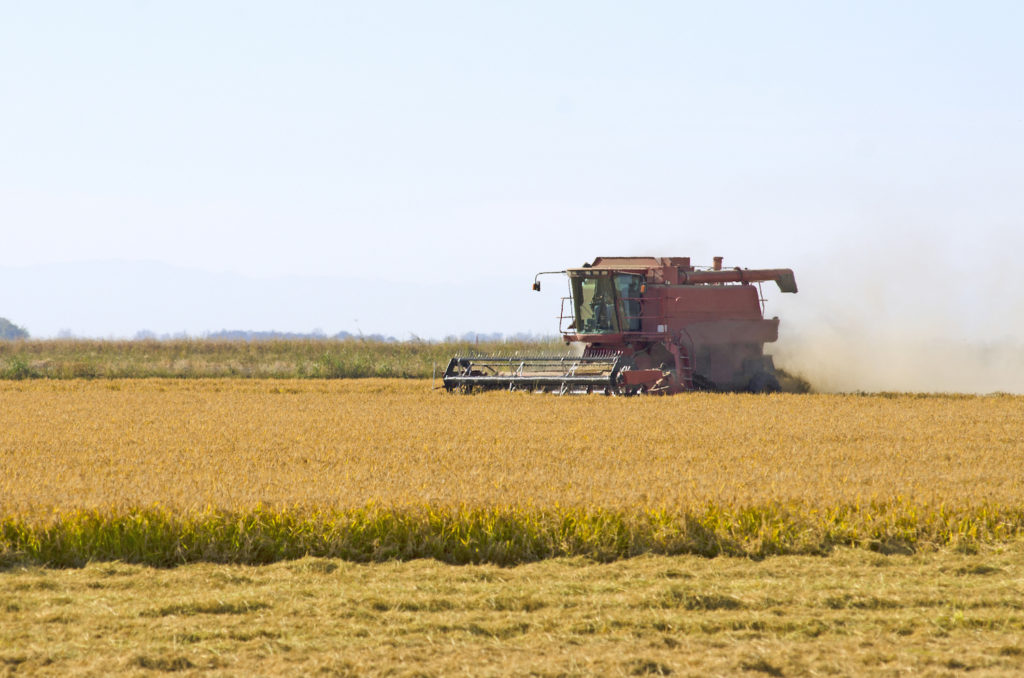
A rice farmer in California says it may be time for state growers to consider different varieties of rice, like Japanese long grain, ones that require less water
Annual rice production has shrunk since the 2010 record of 243.1 million hundredweight (100-pound units, or cwt for short), with production down 20 percent in 2017, to 178 million cwt, according to reports from the Economic Research Center of the United States Department of Agriculture (USDA). The four regions where 85 percent of the nation’s crop is grown—the Arkansas Grand Prairie, the Mississippi Delta, the Gulf Coast, and California’s Sacramento Valley—have seen rising temperatures and heavy periods of rainfall like the ones Isbell has noted.
The U.S. will lose its place among the top five rice-exporting countries because of growers’ inability to profitably expand acreage.
The USDA’s 10-year baseline rice projections in 2028 show a slight decline in planted area, modest growth in consumption, a decrease in exports, and A slow increase in farm prices. According to this report, the U.S. will lose its place among the top five rice-exporting countries because of growers’ inability to profitably expand acreage.
Weather changes introduce two obstacles to rice production: an increase in diseases like bacterial panicle blight (BPB), and unpredictable rain patterns that make crops more vulnerable than in the past. In Arkansas, blight caused historical losses of 50 percent in 2010, according to research done by the University of Arkansas. In 2017, flooding eroded and destroyed levees, causing damage to over 100,000 acres of the state’s more than 1.55 million acres of rice.

RiceCommodity rice farming provides the bulk of the U.S. production, with over 100 varieties in primarily six states
Dr. Anna McClung, of Arkansas’ Dale Bumpers National Rice Research Center, heads a research team currently trying to identify genes that make rice plants more resilient to heat stress. They also hope to learn what traits are most sensitive to environmental stress, and to identify natural genetic variables that might improve the rice plant’s ability to flourish.
According to the National Climatic Data Center, Arkansas experienced one of the hottest summers on record in 2010, with average temperatures in August of 85.8 degrees, compared to the past average, 80.7 degrees. Arkansas State University researchers studying how high temperatures affect rice have found a five-degree increase in nighttime temperatures over the past 40 years.
Rice farming both contributes to and suffers from climate changes.
McClung says that this increase hampers the plants’ ability to photosynthesize, to harness energy from sunlight by consuming carbon dioxide and forming carbohydrates.. Higher temperatures disrupt the process and lead to decreased yield—chalkier kernels, and fewer of them.
Heat also has a negative effect on pollination. “In essence, the pollen doesn’t fly around as it should,” says McClung. “Water as a liquid rather than a vapor causes pollen to rupture. Approximately 97 percent of rice plants are self-pollinated, depending on conditions, so heavy and uniform pollination can be a necessity at times.”
Erika Styger, associate director for climate-resilient farming systems at Cornell University, points out that rice farming both contributes to and suffers from climate changes: It produces methane and nitrous oxide emissions, and then is strained by the droughts and floods that are the consequence of those increased emissions.
“Unless we have water resources, we won’t be able to grow rice like it has been grown conventionally.”
There are government-led initiatives to lower greenhouse gas emissions, such as the purchase of carbon credits in California and the Mid-South, as well as private buy-ups by a diverse group that includes Microsoft, the Environmental Defense Fund, and a private investor, Terra Global. Farmers reduce carbon emissions as well as water and energy use with methods that include alternate wetting and drying, and early drainage of the fields, which can reduce water consumption by millions of gallons. The carbon credits are then sold on the carbon market, where the current price is $7 per ton.
McClung feels that the very future of the rice crop is at stake, unless growers adapt to a new climate normal. “Unless we have water resources, we won’t be able to grow rice like it has been grown conventionally. There will need to be an adaptation of how we grow rice globally,” she says. “The aquifers are being depleted faster than they are being recharged.”
Some farmers build reservoirs on their land to capture rainfall, and reuse drainage water, which helps keep pesticides out of public waterways.
Intermittent flooding is another option: farmers let water levels subside until the soil becomes mud and then floods the fields. McClung says there is no indication that the practice has a negative impact on yield.
“Realistically, is rice something that is going to be practical with climate change?”
But in the past year, conflicting studies have linked intermittent flooding to large emissions of nitrous oxide, 30 to 40 times higher than the amount of methane, another greenhouse gas, reported for continuous flooding. This issue is hotly debated: the International Rice Research Institute, based in the Philippines, claims the study is flawed. Within their research facilities, they house over 135,000 varieties of rice and have secured permanent funding by the Crop Trust, a partnership between the United Nations Food and Agriculture Organization and the Consultative Group for International Agricultural Research.
Some growers and researchers are looking north, where it’s cooler—where the weather looks the way the weather used to look farther south: higher temperatures, shorter winters. According to data gathered by the Northeast Regional Climate Center in Rosendale, New York, there was an average of 9.1 more inches of rain in 2010 than in 1957.
Cornell University’s Climate-Resilient Farming Systems has a program that provides resources for some small rice farmers looking to venture up north. In 2019, they gave Nfamara Badjie, a Gambian rice farmer, a grant to help improve his harvest. At his six-acre farm in the Hudson Valley, Badjie starts plants directly in the soil, on raised beds. But the timing is essential. If the seedlings are planted too early or too late, the grains will not be ready for harvest.
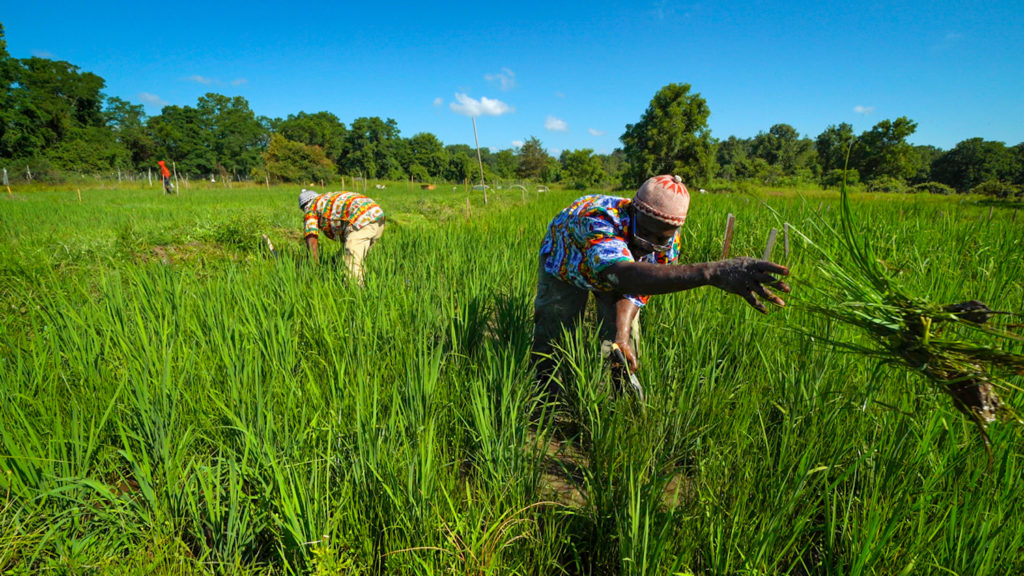
Left to right, Nfamara Badjie and Moustapha Diedhiou weed the fields at the Badjies’ rice farm in Ulster Park, N.Y.
John Munson/Cornell University
Erik Andrus started farming six acres at his Boundbrook Farm, in Vermont, in 2016, but has had trouble finding information on best practices. He relies on a loose network of experimental growers sharing notes where they can. “Occasionally, we will get some help from Arkansas research, but Northeastern rice is a different animal than rice in the South,” he says, complaining that California commodity growers do not share information about growing practices.
The California Rice Commission did not respond to a request for comment.
Robin Koda, a second-generation rice farmer at Koda Farms, in California’s San Joaquin Valley, has been a grower long enough to appreciate the threat climate change represents.
“Realistically, is rice something that is going to be practical with climate change?” Koda asks, rhetorically, unable to provide a reassuring answer. Koda knows growers in the Southeast who have already fled bad weather. “They have noticed where they have grown rice has become impacted by hurricanes. So, they are moving more inland into other states that have no previous history of this crop,” she says. As for California, Koda says that it may be time for state growers to consider different varieties of rice, like Japanese long grain, ones that require less water.
“Some people think large farmers are the most productive, but that is not really true. They simplify and reduce the diversity of rice varieties.”
This isn’t the first time rice growers have tried to escape the weather. The first records of rice farming are from Charleston, South Carolina, in 1685, where swamps provided an ideal environment, and, by 1720, a commercial crop. By 1880, farms had started to move inland, to states along the Mississippi River, and eroding levees and floods caused more expansion, to Arkansas, Texas, Louisiana, Mississippi, and eventually California.
Two kinds of farms developed: the small grower, like Styger, Andrus and Koda, and the big commodity farm that contracts with smaller farmers to grow rice to a price. Commodity rice farming provides the bulk of the U.S. production with over 100 varieties in primarily six states.
But commodity rice farming is not without risk. “Commodity farming is not a very healthy choice. Some people think large farmers are the most productive, but that is not really true. They simplify and reduce the diversity of rice varieties,” says Styger, which can increase risk if a single variety fails to thrive in a given climate. Smaller farmers, who often grow more than one variety, make themselves less vulnerable to the weather.
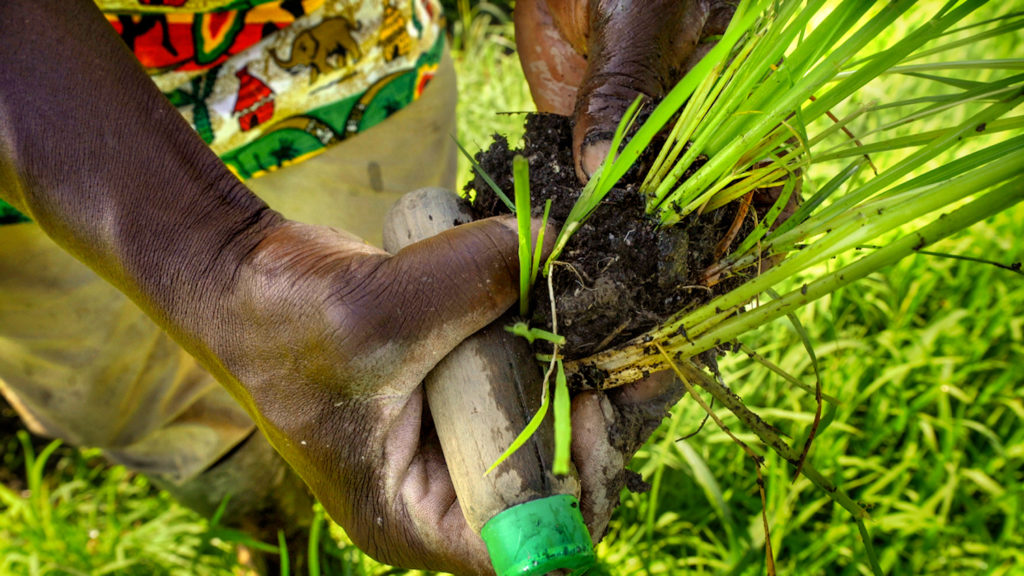
Nfamara Badjie holds a rice plant on his farm in Ulster Park, N.Y.
John Munson/Cornell University
“Rice is not a commodity in the Northeast,” says Styger, “it is a boutique crop.” The retail price of small-farm rice can go up to $8 or $10 a pound, while most commodity rice sells at less than $2 per pound.
Although sustainability is often touted in smaller farms, Isbell Farms’ commodity crop is considered sustainable under the Farmer Sustainability Assessment run by an international auditing company that Nestle, Unilever, and Danone created to “support the development and implementation of sustainable agriculture.” Isbell grows long grain Japanese rice and sake rice, which he says he can grow with a 50 percent reduction of water and 50 percent methane reduction.
Isbell employs ‘zero-ground’ technology, farming on a perfectly level field, which supports controlled water levels, reduced water consumption, little soil erosion and a natural decrease in carbon emissions. He also focuses on not tilling the soil, as well as alternate wetting and drying the fields, all of which reduces usage.
“We are not just the victim in the weather changing patterns,” says Isbell. “We can be part of the positive effects to help mitigate that.”



